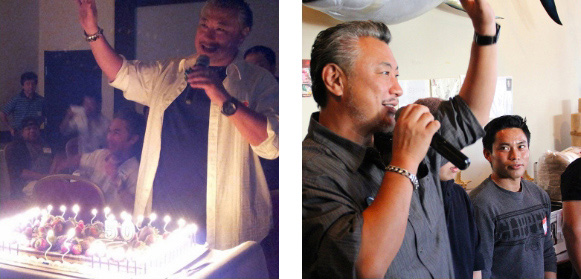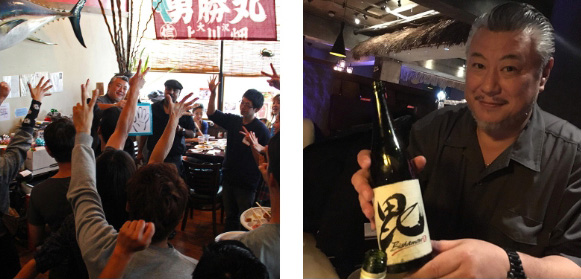
Bishamon Group
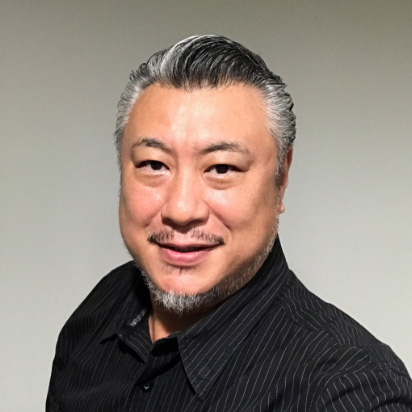
Prologue
With the goal of providing products and services of value from the customer’s perspective, the Bishamon Group continuously seeks evolution in taste.
Since coming to America in 1988, owner Takaaki Kohyama has constantly thought about what kind of impact he is capable of making on his community and how he might leverage this ability to fulfill his desire to contribute to and repay the community for the support he has received from the great many people who helped him get where he is today. Takaaki always makes sure to take the time to talk to his employees face-to-face, and he puts a great deal of effort into nurturing employees in order to help them refine and develop the aspects that make them the individuals they are.
Takaaki Kohyama
Bishamon Group CEO
Takaaki Kohyama was born in the Hachioji district of Tokyo in 1963. After studying at a public high school, he tried his hand a variety of different jobs before becoming a trainee at a Japanese restaurant at the age of 19. Making the most of his indefatigable and earnest personality during his training, he was ultimately chosen as the manager of an affiliate Japanese restaurant when he was just 21, and everything in this period formed the starting point of the journey that led to where he finds himself now.

Coming to America
In 1988, the main branch of the restaurant group he worked for was flourishing and extremely busy, and so the decision was made to close the other branches and focus on this main restaurant. Going overseas was not something that had occurred to Takaaki prior to this, but at this point he began to consider the idea and at the age of 25 he resolved to go abroad. Leaving Japan with just a single bag he headed for Los Angeles as, having been born close to an American military base, he felt a certain closeness to the USA and so choosing this country as the destination for his first overseas experience felt completely natural.
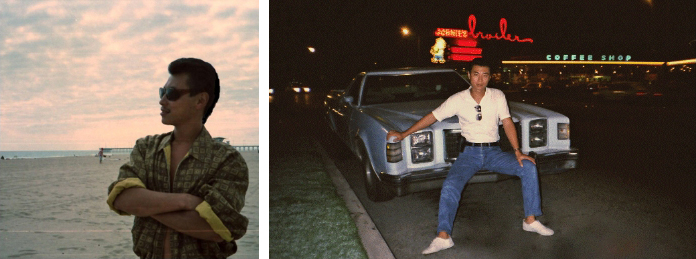
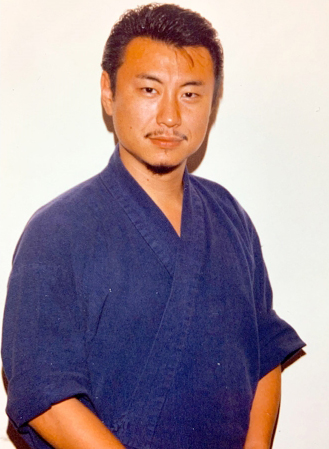
Living in
The day after he arrived in LA, an acquaintance set him up with a job at a Japanese restaurant in the city of Covina. While this restaurant would eventually go on to become the first in Takaaki’s group into which he poured his heart and soul, at the time he was a youngster with only $400 in his pocket and no place to stay. The job, however, included a place to stay at the owner’s house and over the course of the month leading up to his first paycheck, he developed a feeling of fondness for and gratitude to those around him, a feeling that remains in his heart to this day.

Independence
In his role at the restaurant that started when he moved into the owner’s house, Takaaki’s personality shone and he was chosen as manager the following year. And in 1993, when he was 30 years old, he took over the restaurant he had been managing from its owner. This was his first experience of being an owner in the restaurant industry, which he had been involved in for so long, and he opened the sushi restaurant that would go on to mark the starting point in the history of the Bishamon Group. He poured his heart and soul into this restaurant every single day, and the name he gave it was Bishamon.

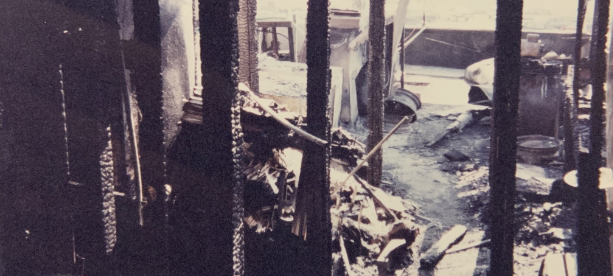
Fire and re-opening
Bishamon was doing well and everything was plain sailing when, in 1997, the restaurant which had become everything to Takaaki burned down. With no idea as to when, or even if, the restaurant would reopen, the talk was that it would never make a recovery and Bishamon began to be forgotten about. But for Takaaki there was no giving up and a year after the fire the restaurant rose from the ashes like a phoenix. At the same time he opened a karaoke bar on the second floor of Bishamon, and when the former employees came back to work at the reopened restaurant, the sight that greeted them was a wave of customers on the day the restaurant reopened. The emotion Takaaki felt towards the people who had supported him and waited with anticipation for the reopening would spur Takaaki on as he took the restaurant forward.
Daikokuya Main Branch
The restaurant that would go on to consistently be LA’s most popular ramen place year in year out took its first breath in Little Tokyo in 2002. It was around this time that someone came to Takaaki, who had become a beacon of ability and talent relied upon by those around him, and gave him the key to the ramen place saying only “I’ll leave the rest to you” before disappearing. Takaaki took over the place, but with the burden of several months of rent to pay there was no money to allocate to redecorating. This is where the flexibility that Takaaki is equipped with came in. He decided to utilize the ambiance of the more than 100 year old building to let guests experience ramen culture in an atmosphere of times gone by; a feat that required flexibility and the ability to see things differently. The general perception of people living in America in those days was that ramen was merely noodles that came in a plastic cup that you poured hot water into and cost less than a dollar. Behind the now flourishing grand restaurant that helped change this perception is pure effort that involved a year of minimal sleep and living in the restaurant to make the soup and serve customers until 4am and gain recognition. The popularity of social media also provided a tail wind, and the more people who reviewed it favorably the more people came, which resulted in the restaurant’s reputation spreading like wildfire. But according to Takaaki the restaurant is still not complete, and he continues to seek evolution in taste.
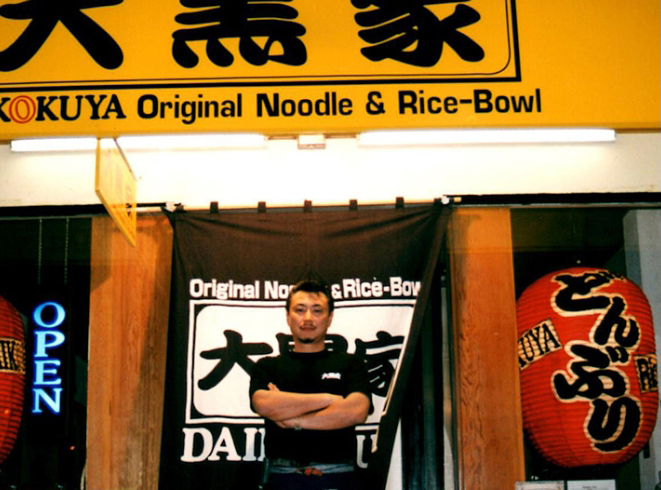
Tamon & Ohjah
In May 2007, Takaaki opened a restaurant named Tamon on the second floor of the Miyako Hotel in Little Tokyo which would allow him to bask in his element: sushi and Japanese cuisine. At the same time, he opened a lounge next door called Ohjah. With Tamon and Ohjah being on the second floor, they take visitors a million miles away from the noise of the city and enable them to relax. And with the hotel that hosts Tamon and Ohjah being in Little Tokyo, since they opened they have often been used as places to hold events by Japanese organizations and as places to take a step back and relax. Given the fact that they provided the Bishamon Group with the opportunity to enter and play a prominent role in the Japanese community, Tamon and Ohjah can perhaps also be described as the Group’s flagship establishments. The name Tamon comes from the god Tamonten, which is another name for the god Bishamonten – the only of the Seven Gods of Fortune to have a martial appearance. After 19 non-stop years in America, Takaaki perhaps felt that an establishment that felt hidden away and allowed for quiet reflection was necessary.
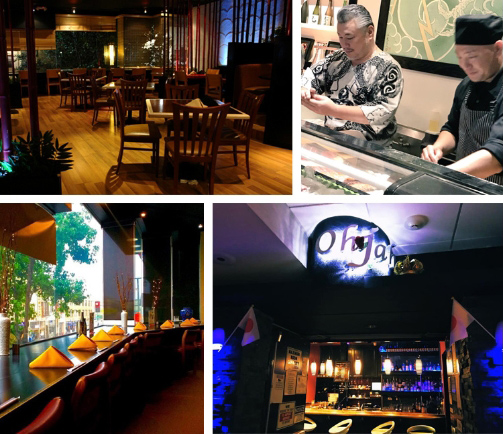
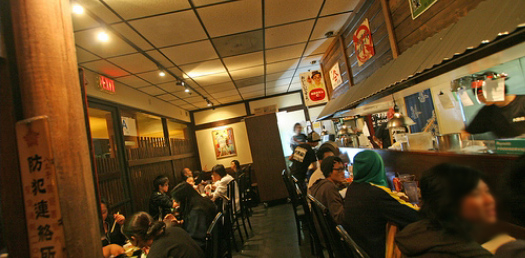
Daikokuya Monterey Park
The Monterey Park branch is the second Daikokuya restaurant and opened in February 2009 – seven years after the original restaurant. It was a long anticipated opening, and as was expected it gained the support of many people in this heavily Asian-influenced area. Its popularity is deep-rooted and it is always as full of customers as the original establishment.
Supported by customers who simply adore Daikokuya’s ramen, employees of the restaurant are marching towards its goal with the spirit of maintaining the atmosphere of times gone by and teaching people about age-old ramen culture as envisioned by Takaaki when the first Daikokuya opened.

Midoh
The next type of cuisine that Takaaki took on the challenge of opening a restaurant for was the Japanese take on Western food that has developed independently in Japan, and in March 2013 at the age of 50 he opened the restaurant Midoh that provides a wide selection of curry and Western-style dishes to its customers. In the background to this was his strong desire to try his hand at Japanese-style curry. The more he sought to develop the flavor of a curry, the deeper and broader the flavor became, and this led to a process of trial and error before he finally discovered the flavor he was looking for. He realized instantaneously this was the taste he was looking for, and when he saw satisfaction of the face of customers who ordered his curry, he felt joy in the way they accepted and appreciated it. With this as the house specialty, the restaurant’s menu holds its own against a host of other highly-rated restaurants serving Western fare.

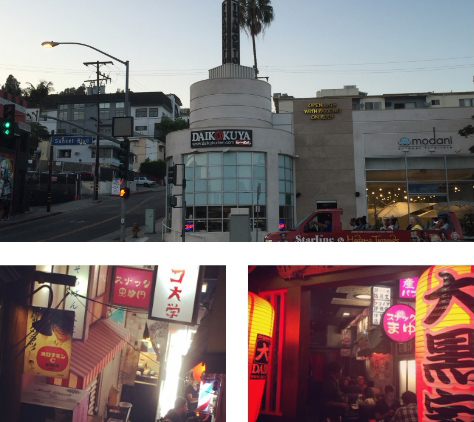
Branching out
Takaaki gave permission to a member of the staff at the main branch of Daikokuya to open his own branch restaurant. In 2014 he opened Daikokuya Sawtelle as his first restaurant, and then in 2016 he opened Daikokuya Sunset in Hollywood as the second. At first, Takaaki had reservations about this member of his staff branching out on his own, and he was concerned that a ‘child of Kohyama’ who had learned his trade under his tutelage would end up facing the same steep and arduous path that Takaaki himself had. Yet at the same time, he also felt joy that the staff member had reached the stage where he could leave the nest and branch out on his own. Takaaki taught him that if he encountered rough waters, sticking steadfastly to the same course was the key to whether he would succeed, and kept looking out for him after he left the nest and started out on his own. And now this former apprentice is doing his best to return the parental love shown to him by his master and is running a restaurant that enjoys the support of a great many customers.
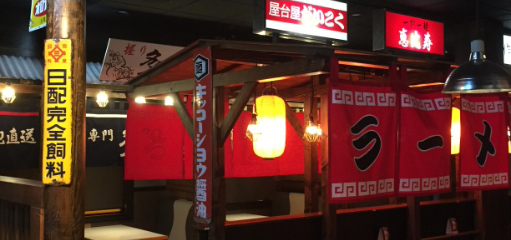
Daikokuya El Monte
The third branch of Daikokuya. Daikokuya El Monte opened in June 2016 – a full seven years after the opening of Daikokuya Monterrey Park. With the comfortable seating available, customers can relax and take their time as they enjoy the cuisine on offer. This restaurant also takes Takaaki’s ideals and uses them as its goal. The spacious layout features a central kitchen, and it continues to make the soup that forms the lifeblood of Daikokuya and is used at all Daikokuya branches.
Perhaps we will see a fourth restaurant opening in seven years’ time. We can but wait and hope.
A passion for his hometown
In May 2018, he opened a soy sauce ramen restaurant in Little Tokyo on the foundation of a strong desire to bring to people the appeal of this dish that is highly popular in Hachioji. The name he gave this restaurant is Hachioji Craft Ramen. In Los Angeles, the main type of ramen available was of the tonkotsu pork bone variety found at Daikokuya, but this one uses broth with a lighter flavor given to it by chicken stock that harmonizes with grated onion. Along with salt-flavored ramen, it has won much praise and shows Takaaki’s passion for his hometown.


Midoh Sawtelle
Since its opening 7 years ago, Midoh Japanese Kitchen Rowland Heights has been one of the favorite food outlets for local restaurant patrons. In August 2020, the long awaited second Midoh’s restaurant finally opened its doors in the heart of the Sawtelle District in Westside Los Angeles.
It is in the midst of the COVID-19 pandemic. “Now is the time!” Takaaki Koyama determined. His courage and perseverance remind us of the Frontier Spirit that American settlers showed during the Westward Expansion Era.
No matter what kind of hardship occurred, those pioneers did not give up their hopes and discovered their land. Koyama might have the very sprit that the pioneers possessed.
“Yōshoku” (meaning Western-influenced meals) was originated 150 years ago in Japan, right after the policy of National Isolation was eradicated. Yōshoku began its history by altering European Cuisine and evolving itself into one of the unique Japanese Cuisine styles, eating European dishes with a bowl of rice.Midoh Japanese Kitchen could be the best place to experience the very sophisticated, yet authentic yōshoku in Los Angeles.
Midoh Sawtelle has a unique ambience that is slightly different from the original Midoh Rowland Heights. It is time to unite families, people and prayers for peace in this uncertain time. That’s the very reason that Koyama has created this family-oriented atmosphere. His wish is for people to gather and share their laughter at Midoh Sawtelle, where customers are greeted by a warm “Welcome Home!”. Midoh Sawtelle also offers wide selections of home-made desserts and sweets.
Just like Koyama’s signature ramen restaurant, Daikokuya, which opens its sister restaurant every 7 years, Midoh Japanese Kitchen too has begun its journey to a sensational success.
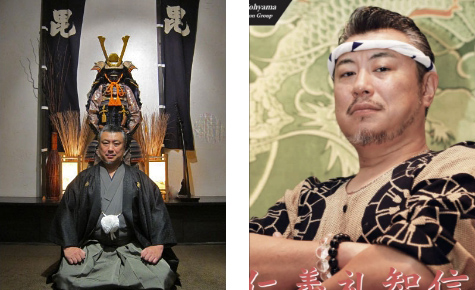
Epilogue
Benevolence, righteousness, propriety, wisdom, sincerity: a kind heart, a strong heart, a grateful heart, a righteous heart, and an honest heart. Takaaki has always thought about the best way to live as a person, and has always gone where the conclusions he has reached have taken him. This journey has by no means been smooth, but he has gotten through it by always telling himself that in life there are no wasted experiences. Everything he does is for his customers.
It is said that the Seven Gods of Fortune are a group of multinational gods. Perhaps in America, with its multinational and multiethnic population, Takaaki has been protected by these multinational gods over the course of his journey.
Motivated by those around him, he will go forward apace with no thought of standing still.


